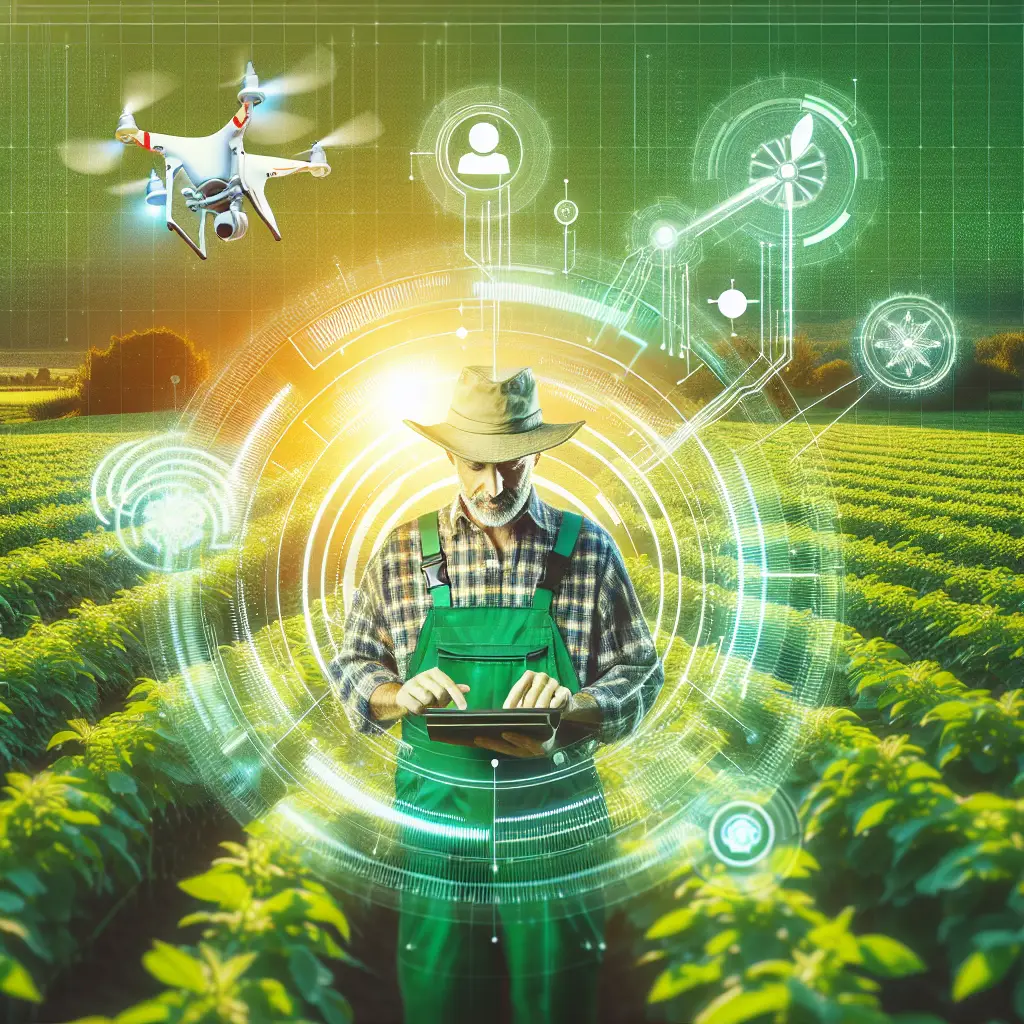Digitization has revolutionized every sphere of life, including agriculture. Embracing Artificial Intelligence (AI) technologies in this sector, both emerging and developed economies have been paving the way to optimize agricultural practices, enhance productivity, and address world food security concerns. This article explores the potential and implications of AI in agriculture.
Artificial Intelligence in Agriculture
At its core, AI involves the capability of machines to mimic human intelligence. When applied to agriculture, it opens doors to unprecedented possibilities, ranging from using machine learning algorithms for predicting crop yields to deploying autonomous robots for weed control. The use of AI in agriculture is reshaping traditional farming methods and establishing progressive trends that promise to bring about a radical transformation.
Predictive Analytics
AI platforms rely heavily on Big Data coupled with machine learning algorithms for predictive analytics. In precision farming, predictive analysis enabled by AI has been playing a pivotal role in utilizing resources effectively and reducing losses. Farmers can predict weather patterns, identify plant diseases, and forecast crop yields accurately using AI-powered tools.
Prediction algorithms assimilate diverse data inputs like weather data, satellite imagery, and historical yield data, resulting in accurate forecasts which are critical for planning and decision making in agriculture. Early detection and treatment of plant diseases and pests can limit crop losses, while accurate weather predictions allow for timely farming operations. This predictive precision helps to maintain the quality of produce, realize better harvests, and ultimately, increase profits.
Farm Robotics
AI-powered robots are revolutionizing labor-intensive tasks in the farming sector. These robots, guided by AI, can automate tasks like planting, weeding, and harvesting, resulting in significant labor and cost savings. Apart from their task efficiency, these robots can also collect and analyze data on various farming aspects such as crop health, soil condition, and weather patterns.
Let’s take the example of an AI robot named ‘See & Spray’ developed by Blue River Technology. This robot uses computer vision technology to identify weeds and sprays herbicides precisely, reducing herbicide use by up to 80%. Thus, these robots not only reshape the farming process but also contribute to sustainable farming practices by limiting chemical use.
Agricultural Drones
The deployment of AI-based agricultural drones is another significant breakthrough. These drones, equipped with advanced AI capabilities and high-resolution cameras, can capture images that provide a detailed, bird’s-eye view of fields. With the assistance of machine learning and image processing techniques, these images can help in carrying out crop health assessments, detecting diseases or pests, assessing soil health, and monitoring irrigations systems.
For example, an AI startup named ‘Ceres Imaging’ uses these drones to capture aerial images and uses machine learning to analyze the images for water stress, nutrient deficiencies, or pests. These accurate, timely insights help farmers make critical decisions about irrigation, fertilization, and pest control, ultimately leading to improved crop yield and productivity.
Livestock Monitoring
Livestock management is another vital area where AI is making notable contributions. AI-powered applications can monitor livestock’s health and reproductive status, feeding behavior and detect early signs of disease or distress. These technologies leverage image recognition and behavior monitoring algorithms, continuously providing updates to farmers. This proactive approach significantly reduces the risks associated with livestock rearing, boosts productivity, and furthers sustainable farming.
AI and Sustainability
AI in agriculture also accelerates sustainability efforts. For instance, AI can optimize irrigation to minimize water use, enhance fertilizer application to minimize chemical runoff, and optimize crop rotation to maintain soil health. By promoting precision farming, AI advances not only productivity but also sustainable agronomic practices.
Challenges and Considerations
While AI undoubtedly promises a progressive agricultural future, it faces several challenges. For starters, the adoption of AI in farming requires a significant initial investment, which might not be feasible for small-scale farmers. Also, extensive training is required to equip farmers with the knowledge to operate AI-based applications. However, ongoing research, public-private collaborations, and government initiatives are underway to make AI-based technologies affordable and user-friendly.
Conclusion
In conclusion, AI casts a potent influence on modern agriculture, setting the stage for a tech-centric agricultural revolution. Although initial challenges subsist, the advantages AI brings to the table far outweigh the drawbacks. With further advancements and adoption, AI is poised to redefine the future of agriculture, making it more efficient, sustainable, and resilient, thereby establishing itself as a game-changer in the agro-industry. Undoubtedly, the amalgamation of AI and agriculture holds immense potential, and it will be exciting to witness the transformative journey.
Share this content:

